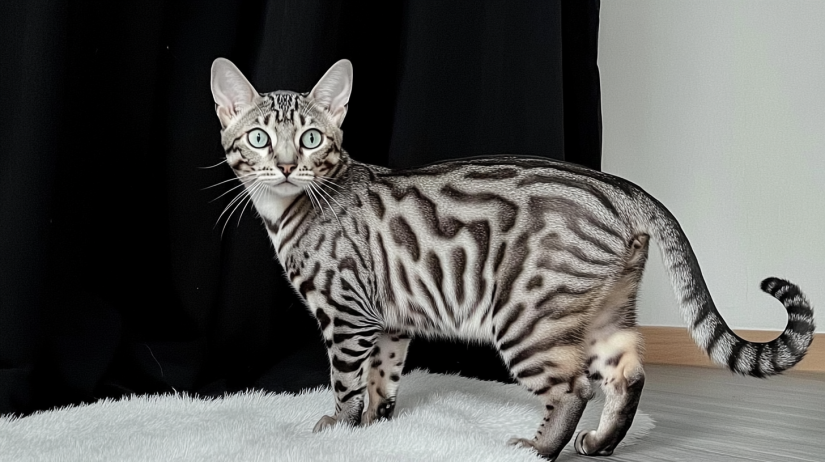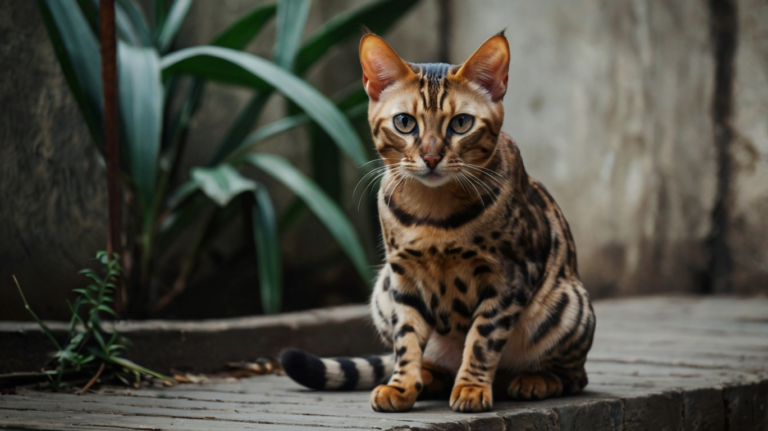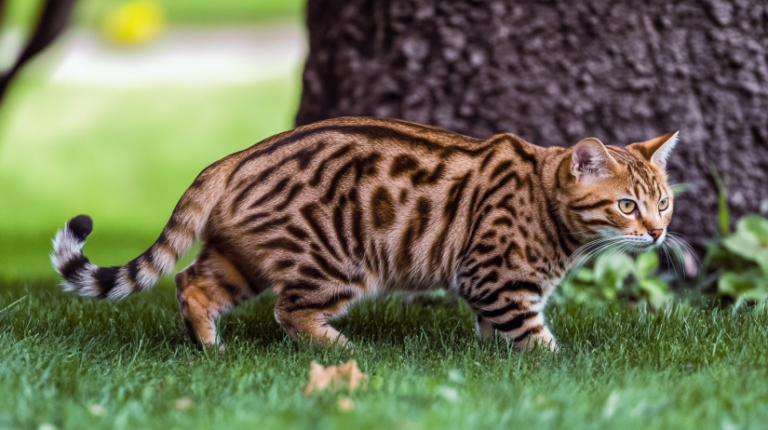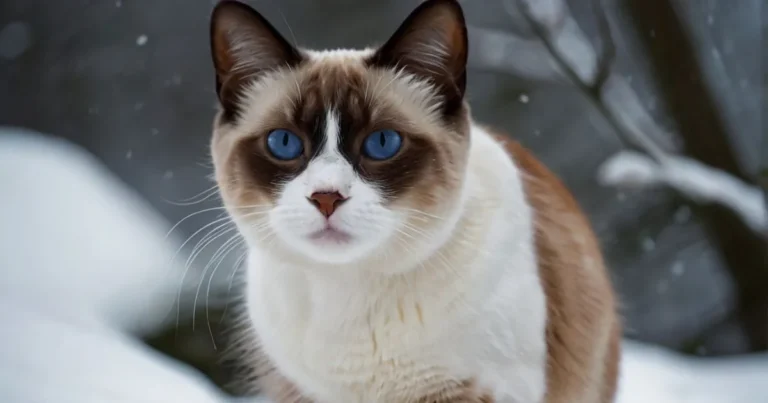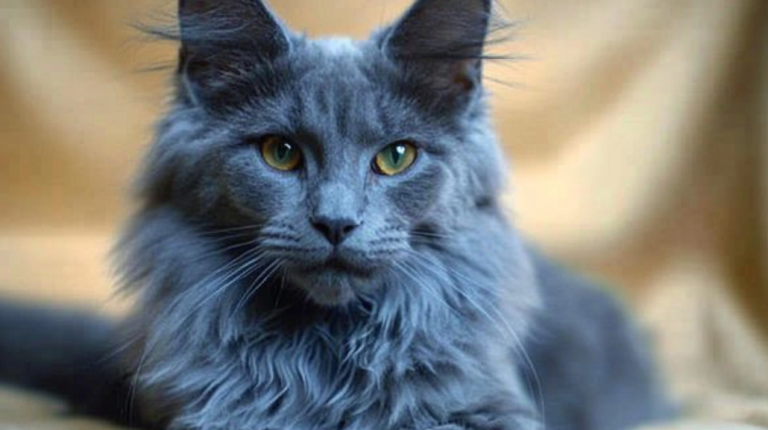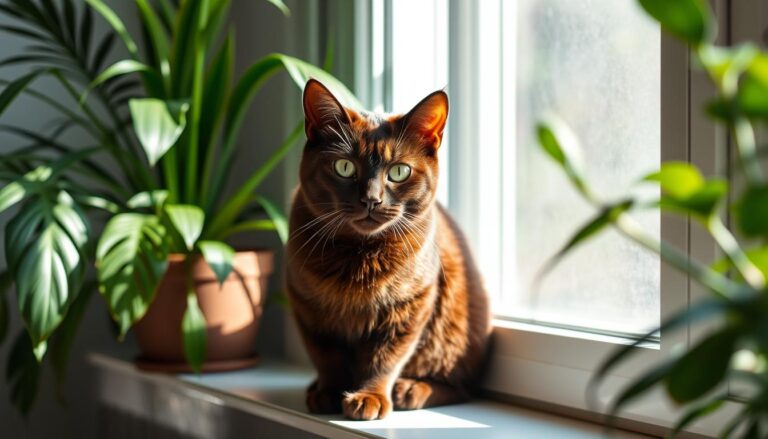Silver Bengal Cat: 7 Positive & Dazzling Secrets
Introduction
Picture returning home to find a graceful, glittering cat weaving between your legs, tail high and eyes gleaming with mischief. That’s the daily scene you might experience with a silver bengal cat—an enchantingly hued variation of the Bengal breed that combines wildcat-inspired looks with a friendly, outgoing temperament. While standard Bengals display more bronze or golden undertones, silver Bengals showcase a luminous coat reminiscent of moonlight on water. This unusual hue can spark plenty of “oohs” and “ahhs,” but behind the glossy exterior is a cat that loves to climb, play, and bound around with near-doglike enthusiasm.
Still, adopting a silver bengal cat demands careful thought and preparation. From their appetite for puzzle games and vertical spaces to the training needed for harnessing that high-octane energy in productive ways, you’ll need to be ready for a cat that is as bright mentally as it is physically dazzling. In this comprehensive article, we’ll unravel the specifics about silver bengal cat care, delve into their ancestry, discuss potential health issues, and help you decide if these radiant felines are your perfect match.
Origins of the Silver Bengal Cat
Bengal Background
All Bengals trace their roots to hybrid crosses between domestic cats (often short-haired tabbies) and the wild Asian leopard cat. This breeding sought to preserve a striking, “wild” look while maintaining an affectionate house-cat personality. Over time, breeders refined the Bengal line to emphasize rosetted or marbled coats, muscular builds, and high intelligence. The silver bengal cat stands as one variant that brings an icy spin on the classic Bengal patterns, thanks to specific genes that inhibit warm color tones, producing a cooler silver hue.
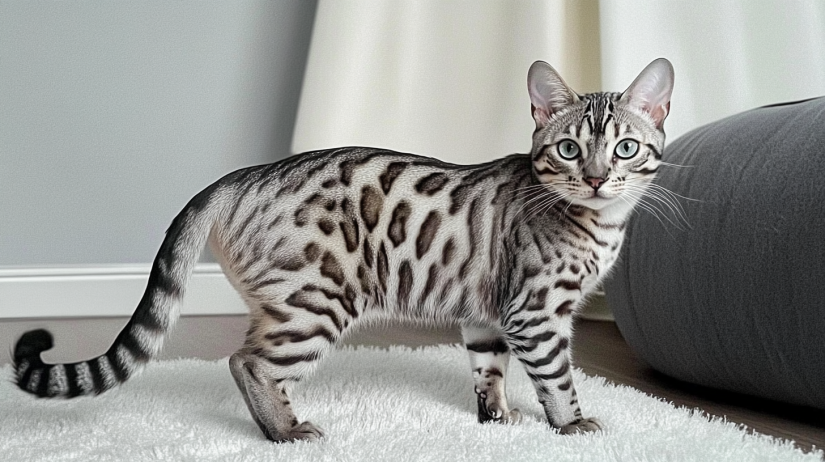
Emergence of the Silver Hue
Bengal coat colors vary widely—brown, snow, blue, and more. The “silver” shade arises from a gene that reduces or eliminates the usual warm pigment, leaving a lighter, silvery background. In practical terms, these genetics allow for bold contrast between the pale base and the cat’s darker spots or marbling. As demand for unique Bengals grew, breeders began selectively pairing cats carrying silver genes, yielding the luminous silver bengal cat that has enraptured enthusiasts.
Recognition and Popularity
While some registries (like The International Cat Association, or TICA) accept silver as a recognized Bengal color, official show standards can differ. Nonetheless, the silver bengal cat has been steadily gaining a fanbase for those who want a standout coat that still embodies the breed’s famously dynamic personality. Social media’s love affair with “shimmering” cats has only heightened interest, leading more prospective owners to ask about silver Bengals specifically.
Physical Traits of the Silver Bengal Cat
Body Structure
Just like their brown or snow cousins, silver bengal cat individuals exhibit:
- Sleek, muscular builds: Lean, athletic frames designed for climbing, leaping, and running.
- Medium size: Typically 6–15 pounds, though some males can be heavier.
- Long, graceful legs: Adapted for agile movement and swift hunting pounces, reminiscent of their wild ancestry.
Coat Patterns
Silver Bengals can display spotted, rosetted, or marbled patterns. Against the pale silver base, these markings often appear:
- Black or charcoal: Crisp, dramatic spots or swirls.
- Grayish: Softer patterns for an almost monochromatic effect.
When well-bred, the contrast between background and pattern remains striking, creating a visual reminiscent of small snow leopards or wildcats.
Coat Textures
- Short and glossy: The fur typically feels silkier than standard domestic cats, partially due to Bengal heritage.
- “Glitter” effect: Many Bengals have translucent hair tips that reflect light, giving a faint sparkle in bright conditions—a phenomenon particularly noticeable on a silver bengal cat.
Table: Growth & Development Stages of Silver Bengal Kittens (Approximate)
| Age (Weeks/Months) | Weight Range | Milestones |
|---|---|---|
| 8 Weeks | ~1.5–2.5 lbs | Weaning complete, adjusting to new home, early socialization |
| 3–4 Months | ~3–5 lbs | Active play, exploring environment, teething begins |
| 5–6 Months | ~5–8 lbs | Juvenile independence, more advanced climbing or leaping |
| 9–12 Months | ~8–12 lbs | Approaching adult size, sexual maturity possible |
| 1–2 Years | ~8–15 lbs (adults) | Full physical development, stable coat color & pattern clarity |
Personality and Temperament
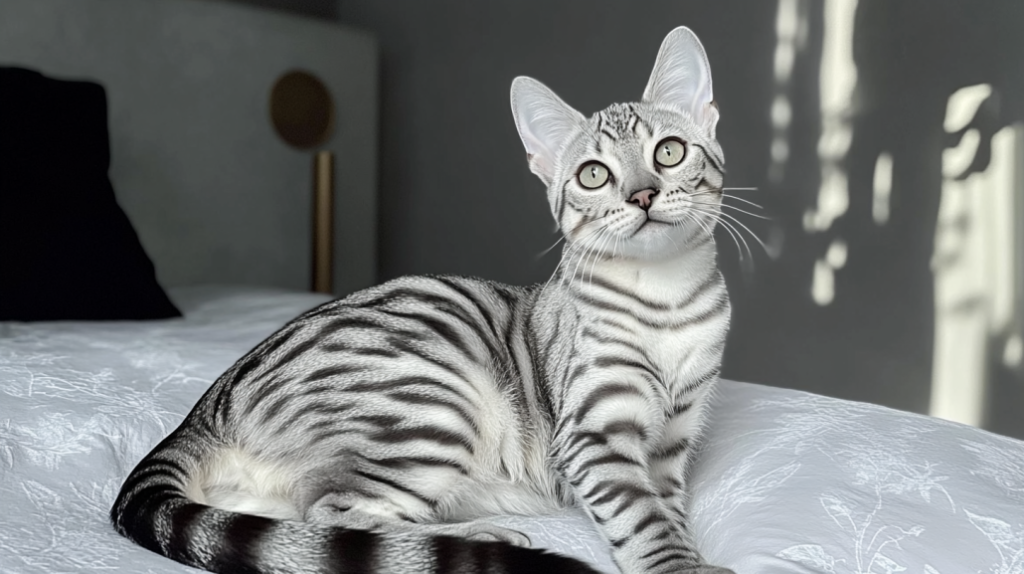
Energetic and Playful
silver bengal cat personalities mirror those of other Bengals: always on the go, brimming with curiosity. They adore climbing tall cat trees, chasing toys, investigating new corners of your home, or learning tricks. If you want a couch potato, this breed may prove too active for you. Conversely, if an agile, interactive cat is your dream, a silver Bengal can meet your wildest expectations.
Intelligent Problem-Solvers
Bengals rank among the sharper cat breeds, capable of puzzle-solving and quick command learning. Many silver bengal cat owners find themselves baby-proofing cabinets or installing child locks because these clever felines figure out how to open doors or rummage through drawers. Such mental acumen also means daily puzzle feeders, training sessions, or hide-and-seek are invaluable for burning mental energy.
Affectionate but Independent
Though highly people-oriented, silver bengal cat companionship doesn’t always equate to a lap-cat vibe. They enjoy being near you, following you, playing games, or observing your activities, but might also slip away for bursts of solitary exploration. They typically do well with respectful kids or other pets, though introductions should be monitored. Early socialization fosters a more relaxed attitude around new faces and different animals.
Vocal Communication
Don’t be surprised if your silver bengal cat “talks” to you with a range of chirps, meows, or trills. Bengals can be more vocal than typical domestic cats—some owners relish these cat-human “conversations,” while others must adapt to it. Gentle guidance can mitigate incessant meowing if it arises from boredom or attention-seeking.
Adopting or Buying a Silver Bengal Cat
Ethical Breeders vs. Rescue Options
- Breeders: Reputable breeders conduct genetic testing (for conditions like hypertrophic cardiomyopathy or progressive retinal atrophy), provide transparent lineage info, and ensure kittens are well-socialized from the start. The best breeders will also clarify color genetics and guarantee your kitten truly meets the silver standard.
- Rescue Organizations: While rarer, occasionally a silver bengal cat might appear in a specialized Bengal rescue or general cat shelter. Adoption can be rewarding, especially if you’re open to adult cats or older kittens. Ask about prior health or behavioral concerns, as well as any known background.
Screening and Questions
If you opt for a breeder:
- Genetic Health Tests: Are parents tested for breed-specific disorders?
- Socialization Method: Were kittens raised in a busy household with exposure to typical everyday noises?
- Guarantees: Do they offer a health warranty or return policy if unforeseen issues arise?
Ensure the breeder is well-versed in silver lines and understands coat colors thoroughly.
Day-to-Day Care for a Silver Bengal Cat
Nutrition and Feeding
Because Bengals are muscular and energetic, a silver bengal cat thrives on high-quality diets:
- High-Protein Cat Food: Look for real meat (chicken, turkey, fish) as a primary ingredient.
- Balanced Nutrients: Adequate taurine, essential fatty acids, and vitamins are crucial for coat luster.
- Portion Control: Overfeeding leads to obesity, which can hamper the cat’s agility. Follow your vet’s guidance or the bag’s recommended serving sizes, adjusting as needed for activity levels.
Exercise and Enrichment
silver bengal cat activity levels are typically above average. Without enough outlets for energy, they may scratch furniture or stage nighttime zoomies:
- Climbing Options: Tall cat trees, shelves, or climbing walls.
- Interactive Toys: Laser pointers, feather wands, or puzzle feeders to mimic “hunting.”
- Leash Training: Some owners teach their silver Bengals to walk on harnesses for outdoor exploration.
- Frequent Play Sessions: At least 15-minute spurts, multiple times a day, can help them release pent-up energy.
Grooming Routine
While Bengals are generally low-maintenance in grooming:
- Weekly Brushing: Even short coats benefit from removing loose fur, especially helpful if your silver bengal cat is in seasonal shed.
- Occasional Bathing: Some Bengals tolerate water well, but baths aren’t mandatory unless the cat is dirty or you manage allergies.
- Nail Trims: Regularly clip tips to prevent overgrowth.
- Ear Checks: Clean gently if you notice wax or debris; watch for any sign of infection.
Training Tips
silver bengal cat intelligence welcomes clicker training or short, reward-based sessions:
- Positive Reinforcement: Small treats or interactive play as incentives for following commands.
- Consistency: Set boundaries around undesirable behaviors (scratching the couch) and provide alternatives (sturdy scratching posts).
- Focus on Fun: If training becomes tedious or forced, these free-thinking cats might lose interest. Keep sessions playful and rewarding.
Potential Health Issues
Though generally hardy, Bengals (including the silver variety) may face:
- Hypertrophic Cardiomyopathy (HCM): A heart disease that can appear in many cat breeds. Responsible breeders often screen for it.
- Progressive Retinal Atrophy (PRA): Leading to vision loss over time if inherited.
- Pyruvate Kinase Deficiency (PK Deficiency): Another inherited condition breeders test for.
- Dental Problems: Like many cats, routine dental care helps stave off gum disease.
Spaying/neutering around the recommended age (commonly 6–9 months) can reduce territorial behaviors or marking. Keep up with annual checkups, vaccines, parasite prevention, and monitor your cat’s weight and overall condition. The American Veterinary Medical Association (AVMA) and other reputable bodies offer further guidance on routine feline care.
Integrating Silver Bengal Cats Into Your Life
Apartment vs. House
silver bengal cat owners in apartments can succeed if they create vertical spaces (cat shelves, trees) and commit to daily active play. A bigger home with a catio or enclosed porch is a plus, but not strictly necessary. The real key is consistent engagement—failing that, your cat may find “creative” outlets, like exploring precarious shelves or unrolling toilet paper for fun.
Family-Friendliness
Bengals’ playful dispositions often mesh well with children. However, teach kids to handle a silver bengal cat gently, respecting personal space, especially during mealtime or rest. Because Bengals are agile jumpers, keep in mind they can scale countertops or shelves with minimal effort—child and cat interactions should be supervised to prevent accidental knocks or scratches.
Multi-Pet Households
When introduced gradually, many Bengals can happily coexist with friendly dogs or other cats. The silver bengal cat temperament can be confident and social, but they might try to claim alpha status. If conflicts arise, separate them, reintroduce slowly, and use positive reinforcement for calm interactions. Early socialization with pets fosters a more harmonious environment.
Travel and Outdoor Exploration
If your lifestyle includes frequent travel, you can harness-train a silver bengal cat to join you on short trips. Many love exploring new scents or sights, though confirm your cat’s comfort level—some might get overstimulated by loud, unfamiliar settings. Alternatively, consider a sturdy cat backpack or stroller for safe outdoor journeys where your cat can observe the world from a protected vantage point.
Real-Life Testimonials
Case Study 1: Luna the Therapy Cat
Luna, a silver bengal cat with striking rosettes, displayed gentleness toward humans from kittenhood. Her caretaker recognized Luna’s calmness in chaotic environments and began training her as a therapy cat. Thanks to consistent socialization, Luna now visits local nursing homes and libraries, delighting residents with her luminous coat and reassuring presence. Residents who rarely react to other stimuli perk up at Luna’s friendly headbutts and curious chirps, reaffirming the breed’s capacity for empathy and adaptability.
Case Study 2: Orion’s High-Flying Antics
Orion, a boisterous silver bengal cat, quickly became known for scaling every tall bookcase in the house, sometimes leaping precariously from shelf to shelf. Recognizing Orion’s climbing obsession, his owners installed multiple cat trees, climbing shelves, and puzzle feeders. By channeling his energy appropriately, Orion’s destructive tendencies subsided, and he’s since become the “trick star” of the family, learning to shake paws, spin, and even fetch small toys for treats.
FAQs
What is the rarest color of Bengal cat?
It varies, but many consider the “blue” Bengal or “charcoal snow” among the rarest. A silver bengal cat is not the absolute rarest, though it’s less common than brown. Breeding lines affect how frequently each color appears.
Reworded
Which Bengal hue is hardest to find?
Some say “blue” or “charcoal snow” ranks rarer. Though a silver bengal cat is special, it’s more obtainable than those extremely uncommon shades. Genetics and lineage decide color frequency.
Do silver Bengals come from different breeds?
No, they’re still purebred Bengals, just with specific genes altering coat color. A silver bengal cat falls under the “Bengal” breed but with a lighter background. No separate breed classification exists for silver variants.
Reworded
Are silver Bengals a separate breed type?
They’re genuine Bengals, only sporting a silver hue. A silver bengal cat shares the same ancestry as brown or snow Bengals. Color-specific genes simply yield that cool-toned coat.
Do silver Bengals have the same temperament as other Bengals?
Yes, they typically show the same lively, intelligent traits. A silver bengal cat is as active, curious, and people-focused as any Bengal. Color doesn’t affect core temperament or energy level.
Reworded
Is a silver Bengal’s personality unique compared to standard Bengals?
They generally match the breed’s typical nature—friendly, playful, inquisitive. A silver bengal cat brings the same mental sharpness and sociable flair. Hue alone won’t alter their fundamental behavior.
Are silver Bengal coats prone to more problems?
They can face similar health or coat issues as other Bengals, but no unique ailment is tied solely to color. A silver bengal cat might need the same grooming and nutritional care as standard Bengals. Proper breeding and vet checks matter most.
Reworded
Do silver Bengals get extra coat-related issues?
Not inherently. A silver bengal cat usually has the same upkeep as any Bengal. Quality breeding and routine medical care help prevent or manage typical feline problems.
How do I maintain a silver Bengal’s coat shine?
Frequent brushing, a balanced diet, and enough hydration keep fur glossy. A silver bengal cat benefits from premium food with essential fatty acids. Occasional baths, if tolerated, remove dander and enhance shine.
Reworded
Any special coat care for a silver Bengal’s sparkle?
Regular brushing and top-tier nutrition do wonders. A silver bengal cat thrives on diets rich in omega-3s for healthy fur. Gentle baths and minimal stress keep coats radiant.
Is the silver hue guaranteed in offspring?
Breeders rely on specific gene combos, but no 100% guarantee. A silver bengal cat might produce silver kittens if both parents carry silver genes. However, recessive traits or other factors can yield different colors in a single litter.
Reworded
Will a silver Bengal parent always pass on the color?
It’s not assured. While a silver bengal cat may pass silver genes along, kittens might appear in other shades depending on genetics. Each litter’s color mix can be surprising.
Conclusion
The radiant allure of a silver bengal cat extends beyond its glistening coat—these cats embody the intelligence, activity, and affectionate quirks that define the Bengal breed. Their shimmering appearance simply adds to an already compelling companion package, one that merges a dash of the wild with a heart brimming with loyalty. Whether you’re taken by the cat’s luminous silver hue, its unstoppable curiosity, or the way it follows you around the house chirping for attention, adopting a silver Bengal can be a life-enriching experience. If you’re ready to commit to regular play, mental stimulation, mindful grooming, and constant companionship, you’ll discover that your silver bengal cat can become not just a pet, but a highlight of your daily life. Feel free to share your silver Bengal stories, ask questions, or simply celebrate these bright felines in the comments below!
Curious about other Bengal colors? Compare silver bengal cat traits to the mesmerizing coats of https://www.quickypets.com/blue-bengal-cats/ or explore the dramatic charcoal look of https://www.quickypets.com/black-melanistic-bengal-cat-breed/. If you’re curious about snow variations, check out https://www.quickypets.com/snow-bengal-cat/. You can also gain a broad overview of Bengal cat care by visiting https://www.quickypets.com/bengal-cat-exotic-feline-beauty-for-your-home/.
For broader pet adoption resources, including cat health and welfare, visit the
American Society for the Prevention of Cruelty to Animals (ASPCA). They offer extensive information on spay/neuter programs, pet behavioral tips, and ways to help animals find loving homes—perfect for anyone considering a silver bengal cat or any feline companion.

